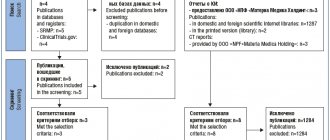To reduce the production of hydrochloric acid by the stomach glands, the drug omez is used. With its use, it is possible to achieve a rapid positive effect in the treatment of gastritis, gastric or duodenal ulcers, as well as many other pathologies.
Omez and omeprazole are identical medications with the same active ingredient. They have the same indications and, if contraindications are violated, cause similar adverse reactions in the body. The main difference between the drugs is different auxiliary ingredients.
The active ingredient in the drug Omez is omeprazole. The drug is produced in two forms: capsules and powder. When they say “omez tablets,” they mean transparent capsules filled with white granules. The coating may be coated with hypromellose, enteric coating, or gelatin.
A medicinal solution for internal consumption is prepared using Omez Insta powder. An additional ingredient in it is anhydrous sodium carbonate. A solution for infusion is prepared from lyophilized powder in bottles.
pharmachologic effect
As the abstract indicates, this medicine is an antiulcer drug that belongs to the group of proton pump inhibitors. The active substance omeprazole, which the capsules contain, inhibits the secretion of hydrochloric acid, having a specific effect on the enzyme H+-K+-ATPase of stomach cells. As a result, under its influence the last stage of hydrochloric acid synthesis is blocked. As a result, regardless of the type of stimulus, the level of basal and stimulated secretion decreases.
Effects when taken
The capsules are swallowed with water. After taking the drug, the active substance omesaprozole is quickly absorbed into the blood after entering the stomach. The maximum amount of it in the blood is detected after about an hour. With one-time use, bioavailability is up to 40%; with continuous use, the figure increases to 60%.
It is important to understand why omez is prescribed in order to eliminate negative consequences from its improper use. The active agent, entering the body, provides rapid inhibition of the secretion of hydrochloric acid. At the same time, omez medicine, the instructions indicate this, begins to work most effectively after 4 days.
In addition, the drug omez has bactericidal properties, which makes it possible to successfully combat Helicobacter pylori bacteria. These harmful microorganisms provoke the development of gastritis and increase the risk of developing peptic ulcers. In the complex treatment of pathologies of the digestive organ in combination with antibacterial drugs omez, the instructions focus on this, allowing you to quickly eliminate unpleasant symptoms. In addition, when taking the drug, healing of the mucous membrane and long-term remission of peptic ulcer disease are guaranteed, which reduces the likelihood of complications such as bleeding.
Other effects associated with decreased hydrochloric acid production:
- With long-term use of the drug, the formation of benign glandular cysts in the stomach is possible, which resolve over time.
- The likelihood of intestinal infections, which can be caused by various harmful bacteria, increases.
Pharmacodynamics and pharmacokinetics
The use of the medicine internally leads to a rapid development of the effect: it manifests itself within 1 hour. Then Omez tablets are valid for 24 hours.
After the medication is stopped, the secretory activity of the exocrine glands of the stomach is restored after about 3-5 days. Omeprazole is characterized by rapid absorption from the intestine. Since the active substance in the drug is contained in acid-resistant granules, they dissolve only in the intestines. In plasma, the highest concentration is observed after 30-60 minutes. The level of bioavailability of omeprazole is 40%. The binding of the drug to plasma proteins is 90%. Metabilized in the liver. Excreted through the kidneys.
When administered intravenously, dose-dependent inhibition of gastric secretion is observed. The half-life of omeprazole after intravenous administration is approximately 40 minutes.
Pharmacological properties of the drug Omez
Omeprazole (5-methoxy-2-[[(4-methoxy-3,5-dimethyl-2-pyridinyl)methyl]sulfinyl]-1–1 N-benzimidazole) is an antiulcer agent that inhibits basal and stimulated secretion of hydrochloric acid by parietal cells stomach due to a specific effect on the enzyme H+/K+-ATPase (proton pump). After oral administration, the effect of the drug develops very quickly, within the first hour, and persists for 24 hours. After stopping the drug, the secretory activity of the glands of the gastric mucosa is restored after 3–5 days. Omeprazole in the drug is contained in acid-resistant granules that dissolve in the intestines. Omeprazole is rapidly absorbed, the maximum concentration in the blood plasma is reached after 0.5–1 hour. Bioavailability is 30–40%, clearance is 500–600 ml/min. About 90% of omeprazole is bound to plasma proteins. Omeprazole is almost completely metabolized in the liver and is excreted primarily in the urine (about 80%). The main metabolic pathway is associated with the polymorphic specific isoform CYP 2C19 (S-mephenithiol hydroxylase), responsible for the formation of hydroxyomeprazole, the main metabolite of omeprazole detected in blood plasma. In patients with chronic liver diseases, the bioavailability of the drug increases to 100%, the half-life increases to 3 hours, and clearance decreases to 70 ml/min. In patients with chronic kidney disease (creatinine clearance 10–62 ml/min), the distribution of omeprazole is the same as in healthy volunteers. Since renal excretion is the main route of elimination of omeprazole metabolites, its elimination from the body slows down in proportion to the decrease in creatinine clearance. In elderly patients, omeprazole elimination is reduced and bioavailability increases. IV administration of omeprazole causes dose-dependent inhibition of gastric secretion. With intravenous administration of omeprazole at a dose of 40 mg, a rapid decrease in gastric secretion is observed, similar to what is achieved with repeated oral administration of the drug at a dose of 20 mg. The degree of inhibition of gastric secretion averages about 90% over 24 hours, both with intravenous jet administration and with intravenous infusion. The average half-life after intravenous administration of omeprazole is approximately 40 minutes; total plasma clearance - 0.3–0.6 l/min.
Indications for use of Omez
Indications for use of Omez are as follows:
- peptic ulcers of the duodenum and stomach;
- erosive and ulcerative esophagitis;
- ulcerative processes that are associated with treatment with non-steroidal anti-inflammatory drugs;
- stress-related ulcers;
- peptic recurrent ulcers of the gastric or duodenal localization;
- Zollinger-Ellison syndrome;
- pancreatitis;
- gastroesophageal reflux disease;
- systemic mastocytosis .
If it is not possible to take the drug orally, but there are indications for use, the drug can be administered intravenously.
The list of other things Omez is used for can be expanded by the attending physician.
Omez
Instructions for use of the medicinal product for medical use OMEZ®
Registration number: LSR-004124/09 Trade name of the drug: OMEZ® International nonproprietary name of the drug: omeprazole. Dosage form: lyophilisate for the preparation of solution for infusion. Composition Each bottle contains: Active substance: omeprazole 40 mg. Excipients: sodium hydroxide 5.28 mg, disodium edetate 1.00 mg. Description: white or almost white lyophilisate in the form of a homogeneous porous cake or parts thereof or in powder form. Pharmacotherapeutic group: gastric gland secretion reducing agent - proton pump inhibitor. ATC code: A02BC01 Pharmacological properties Pharmacodynamics Specific proton pump inhibitor: inhibits the activity of H+/K+-ATPase in the parietal cells of the stomach, blocking the final stage of hydrochloric acid secretion, thereby reducing acid production. Reduces basal and stimulated secretion regardless of the nature of the stimulus. Omeprazole is a prodrug and is activated in the acidic environment of the secretory tubules of the parietal cells of the stomach. The effect is dose-dependent and provides effective inhibition of both basal and stimulated acid secretion, regardless of the nature of the stimulating factor. The antisecretory effect after taking 20 mg occurs within the first hour, maximum after 2 hours. Inhibition of 50% of maximum secretion continues for 24 hours. A single dose per day provides rapid and effective inhibition of daytime and nighttime gastric secretion, reaching its maximum after 4 days of treatment and disappearing by the end of 3-4 days after the end of treatment. In patients with duodenal ulcer, taking 20 mg of omeprazole maintains intragastric pH at 3 for 17 hours. During the use of drugs that reduce the secretion of gastric glands, the concentration of gastrin in the blood plasma increases. Due to a decrease in the secretion of hydrochloric acid, the concentration of chromogranin A increases (see section “Special instructions”). Pharmacokinetics: Connection with plasma proteins - 90-95% (albumin and acidic alpha1-glycoprotein). The half-life (T1/2) for the final phase of the pharmacokinetic concentration-time curve in the blood plasma after intravenous administration of omeprazole is about 40 minutes (for liver failure - 3 hours); the total plasma clearance is from 0.3 to 0.6 l/min. There is no change in the half-life during treatment. Almost completely metabolized in the liver with the participation of the cytochrome P450 (CYP) enzyme system with the formation of six pharmacologically inactive metabolites: hydroxyomeprazole, sulfide and sulfone derivatives and others. A significant part of the metabolism of omeprazole depends on the polymorphically expressed specific isoform CYP2C19 (S-mephenytoin hydroxylase), which is responsible for the formation of hydroxyomeprazole, the main plasma metabolite. It is an inhibitor of the CYP2C19 isoenzyme. Excretion by the kidneys (70−80%) and bile (20−30%). In chronic renal failure, excretion decreases in proportion to the decrease in creatinine clearance. In elderly patients, excretion decreases and bioavailability increases. Indications for use As an alternative to oral therapy if it is not possible:
- for peptic ulcers of the stomach and duodenum (including prevention of relapses);
- for gastroesophageal reflux disease (GERD);
- for hypersecretory conditions (Zollinger-Ellison syndrome, stress ulcers of the gastrointestinal tract, polyendocrine adenomatosis, systemic mastocytosis);
- for the prevention and treatment of damage to the mucous membrane of the stomach and duodenum caused by the use of nonsteroidal anti-inflammatory drugs (NSAID gastropathy): dyspepsia, erosion of the mucous membrane, peptic ulcer;
- to prevent aspiration of acidic stomach contents into the respiratory tract during general anesthesia (Mendelssohn syndrome).
Contraindications Hypersensitivity to omeprazole or other components of the drug. Concomitant use with erlotinib, posaconazole, nelfinavir and atazanavir. Breastfeeding period. Children under 18 years of age (efficacy and safety have not been established for this dosage form). With caution Renal failure (omeprazole dose adjustment is not required). Liver failure (see section "Method of administration and dosage regimen"). Osteoporosis. Although a causal relationship between the use of omeprazole and osteoporotic fractures has not been established, patients at risk of developing osteoporosis or osteoporotic fractures should be under appropriate clinical supervision. Pregnancy. Concomitant use with clopidogrel, itraconazole, warfarin, cilostazol, diazepam, phenytoin, saquinavir, tacrolimus, clarithromycin, voriconazole, rifampicin, St. John's wort preparations. Use during pregnancy and breastfeeding Use of the drug during pregnancy is possible only if the expected benefit to the mother outweighs the potential risk to the fetus. During lactation, breastfeeding should be stopped. Method of administration and dosage The drug Omez® is administered intravenously over 20-30 minutes. It is recommended to administer the infusion solution immediately after its preparation. Doses are selected individually, sometimes a higher dose is required. If the daily dose exceeds 60 mg, then the dose should be divided into two doses.
- As an alternative to oral therapy if it is not possible:
- for gastric and duodenal ulcers (including prevention of relapses), it is recommended to prescribe an infusion of the drug Omez® at a dose of 40 mg once a day;
- for gastroesophageal reflux disease (GERD), it is recommended to prescribe an infusion of the drug Omez® at a dose of 40 mg once a day;
- for hypersecretory conditions (Zollinger-Ellison syndrome, stress ulcers of the gastrointestinal tract, polyendocrine adenomatosis, systemic mastocytosis), initial intravenous administration of the drug Omez® is recommended at a dose of 60 mg per day;
- for the prevention and treatment of damage to the mucous membrane of the stomach and duodenum caused by the use of non-steroidal anti-inflammatory drugs - NSAID gastropathy (dyspepsia, erosion of the mucous membrane, peptic ulcer), it is recommended to prescribe an infusion of the drug Omez® at a dose of 40 mg once a day.
After completion of parenteral therapy, antisecretory therapy with oral dosage forms (for example, omeprazole 40 mg once daily for 4 weeks) is recommended to suppress acid secretion. Use of the drug in special cases: Impaired renal function. No dose adjustment is required. Liver dysfunction. In patients with impaired liver function, the bioavailability and clearance of omeprazole are increased. In this regard, the therapeutic dose should not exceed 20 mg per day. Elderly age. The rate of metabolism of omeprazole in the elderly is reduced, but no dose adjustment is required. Instructions for preparing solution for infusion The solution for infusion is prepared by dissolving lyophilized omeprazole powder in 100 ml of 5% dextrose (glucose) solution for infusion or in 100 ml of saline infusion solution. An infusion solution containing 5% dextrose (glucose) should be used within 6 hours. The saline infusion should be used within 12 hours. Before administration, you should ensure that there are no suspended particles in the solution. Preparation of solution for infusion in bottles 1. Draw 5 ml of solution for infusion from the bottle with a syringe. 2. Add the solution for infusion into a bottle with lyophilized omeprazole powder, shake the bottle until the drug is completely dissolved. 3. Draw omeprazole solution into the syringe. 4. Transfer the omeprazole solution into the vial. 5. Repeat steps 1-4 in order to transfer all the drug from the bottle. Preparation of solution for infusion in a soft container 1. To prepare solution for infusion, use a double-sided needle (adapter). Pierce the membrane of the infusion bag with one end of the needle, and connect the other end of the needle to a bottle of lyophilized omeprazole. 2. Dissolve omeprazole powder by pumping the infusion solution from the bag into the bottle and back. 3. Make sure that the powder is completely dissolved, then disconnect the empty bottle and remove the needle from the infusion bag.
Side effects The frequency of adverse drug reactions is presented in accordance with the following gradation: very often (>1/10); often (≥1/100, <1/10); uncommon (≥1/1000, <1/100); rare (≥1/10000, <1/1000); very rare (<1/10000, including isolated cases). Disorders of the skin and subcutaneous tissues: infrequently - dermatitis, itching, skin rash, urticaria; rarely - alopecia, photosensitivity reactions, erythema multiforme, Stevens-Johnson syndrome, toxic epidermal necrolysis. Musculoskeletal and connective tissue disorders: uncommon – fractures of the hip, wrist bones, vertebrae; rarely – arthralgia, myalgia, muscle weakness. Nervous system disorders: often – headache; uncommon – dizziness, paresthesia, drowsiness; rarely – taste disturbance. Mental disorders: infrequently – insomnia; rarely - increased excitability, aggressiveness, impaired consciousness, depression, hallucinations. Gastrointestinal disorders: often – abdominal pain, constipation, diarrhea, flatulence, nausea, vomiting; rarely - dry mouth, stomatitis, gastrointestinal candidiasis, microscopic colitis. Disorders of the liver and biliary tract: infrequently - increased activity of liver enzymes; rarely - hepatitis with/without jaundice, liver failure, encephalopathy in patients with previous severe liver diseases. Disorders of the genital organs and breast: rarely - gynecomastia. Blood and lymphatic system disorders: leukopenia, thrombocytopenia, agranulocytosis, pancytopenia. Immune system disorders: rarely - hypersensitivity reactions: fever, angioedema, anaphylactic reaction / anaphylactic shock. Disorders of the respiratory system, chest and mediastinal organs: rarely - bronchospasm. Renal and urinary tract disorders: rarely – interstitial nephritis. Hearing and labyrinthine disorders: uncommon – vertigo. Visual disturbances: rarely – blurred vision. Metabolic and nutritional disorders: rarely – hyponatremia; very rarely - hypomagnesemia, hypocalcemia due to severe hypomagnesemia, hypokalemia due to hypomagnesemia. General disorders: infrequently – malaise; rarely – increased sweating, peripheral edema.
Overdose
According to clinical studies, with intravenous administration of up to 270 mg of the drug per day and at a dose of up to 650 mg for three days, no dose-dependent side effects were identified. Symptoms: confusion, blurred vision, drowsiness, dry mouth, headache, nausea, tachycardia, arrhythmia. Treatment: symptomatic. Hemodialysis is not effective enough.
Interaction with other drugs A decrease in the secretion of hydrochloric acid in the stomach during treatment with omeprazole and other proton pump inhibitors can lead to a decrease or increase in the absorption of other drugs, the absorption of which depends on the acidity of the environment. Like other drugs that reduce gastric acidity, treatment with omeprazole may lead to decreased absorption of ketoconazole, itraconazole, posaconazole, erlotinib, iron supplements and cyanocobalamin. Their co-administration with omeprazole should be avoided. The bioavailability of digoxin when used simultaneously with omeprazole increases by 10% (adjustment of the digoxin dosage regimen may be required). Caution should be exercised when these drugs are used concomitantly in elderly patients. When used simultaneously with omeprazole, it is possible to increase the plasma concentration and increase the half-life of warfarin, diazepam, phenytoin, cilostazol, imipramine, clomipramine, citalopram, hexobarbital, disulfiram, as well as other drugs metabolized in the liver with the participation of the CYP2C19 isoenzyme (a dose reduction of these drugs may be required ). Omeprazole has been shown to interact with some antiretroviral drugs. The mechanisms and clinical significance of these interactions are not always known. An increase in pH during omeprazole therapy may affect the absorption of antiretroviral drugs. Interaction at the level of the CYP2C19 isoenzyme is also possible. When omeprazole is co-administered with certain antiretroviral drugs, such as atazanavir and nelfinavir, a decrease in their serum concentrations is observed during omeprazole therapy. When used simultaneously with omeprazole, the area under the pharmacokinetic concentration-time curve of atazanavir decreases by 75%. In this regard, the combined use of omeprazole with antiretroviral drugs such as atazanavir and nelfinavir is contraindicated. With simultaneous use of omeprazole with clopidogrel, a decrease in the antiplatelet effect of the latter is observed. When methotrexate was co-administered with proton pump inhibitors, a slight increase in plasma methotrexate concentrations was observed in some patients. When treated with high doses of methotrexate, omeprazole should be temporarily discontinued. With simultaneous use of omeprazole and tacrolimus, an increase in the concentration of tacrolimus in the blood serum was noted, which may require dose adjustment. Concomitant use with inhibitors of the CYP2C19 and CYP3A4 isoenzymes (such as clarithromycin, erythromycin, voriconazole) may lead to an increase in the plasma concentration of omeprazole, which may require dose adjustment of omeprazole in patients with severe hepatic impairment in case of long-term use. Inducers of the CYP2C19 and CYP3A4 isoenzymes, such as rifampicin, preparations of St. John's wort (Hypéricum perforatum), when used together with omeprazole, can lead to a decrease in the concentration of omeprazole in the blood plasma by accelerating the metabolism of omeprazole. When omeprazole is taken together with clarithromycin or erythromycin, the concentration of omeprazole in the blood plasma increases. Co-administration of omeprazole with amoxicillin or metronidazole does not affect the concentration of omeprazole in the blood plasma.
There was no effect of omeprazole on antacids, theophylline, caffeine, quinidine, lidocaine, propranolol, ethanol.
Special instructions If you suspect a gastric ulcer in the early stages, it is necessary to undergo an X-ray or endoscopic examination to establish the correct diagnosis and prescribe adequate treatment. In the presence of any alarming symptoms, such as significant spontaneous weight loss, frequent vomiting, dysphagia, hematemesis or melena, as well as in the presence of a gastric ulcer (or suspected gastric ulcer), the possibility of malignancy should be excluded, since treatment with Omez® may lead to smoothing of symptoms and delay diagnosis. Patients at risk of developing osteoporosis or osteoporotic fractures should be under appropriate clinical supervision, although a causal relationship between the use of omeprazole/esomeprazole and osteoporotic fractures has not been established. Due to a decrease in the secretion of hydrochloric acid, the concentration of chromogranin A (CgA) increases. Increased concentrations of CgA in blood plasma may affect the results of examinations to detect neuroendocrine tumors. To prevent this effect, therapy with proton pump inhibitors should be suspended 5 days before the CgA concentration study. If during this time the CgA concentration has not returned to normal, the study should be repeated.
Impact on the ability to drive vehicles and perform other activities that require concentration and speed of psychomotor reactions. During treatment with omeprazole, dizziness, drowsiness, and blurred vision may occur, so care should be taken when driving vehicles and performing other potentially hazardous activities that require increased concentration attention and speed of psychomotor reactions.
Release form
Lyophilisate for the preparation of solution for infusion, 40 mg. The drug is in a bottle made of colorless transparent glass type I (Eur Ph), sealed with a chlorobutyl stopper, crimped with an aluminum cap with a safety plastic lid. Each bottle, along with instructions for use, is placed in a cardboard box.
Storage conditions
List B. In a dry place, protected from light, at a temperature not exceeding 25 ° C. Keep out of the reach of children!
Best before date
2 years. Do not use after the expiration date stated on the packaging.
Conditions for dispensing from pharmacies:
On prescription.
Manufacturer : Dr. Reddy's Laboratories Ltd., Hyderabad, Andhra Pradesh, India.
Manufactured by: Sofarimex Industria Kimica e Pharmasuetica Lda., Portugal Av. Industrias - Alto do Colaride, Agualva - 2735-213 Casem, Portugal.
Information about complaints and adverse drug reactions should be sent to the following address: Representative office: 115035, Moscow, Ovchinnikovskaya embankment, 20, building 1 tel. fax
Side effects of Omez
In general, side effects during treatment with this drug are rare. The following side effects are possible:
- Digestive system : abdominal pain, nausea, flatulence , taste disturbances, increased activity of liver enzymes.
- Hematopoietic organs: thrombocytopenia, leukopenia , agranulocytosis.
- Nervous system: headache, dizziness, depression.
- Musculoskeletal system : myasthenia gravis, arthralgia , myalgia .
- Skin : rash, itchy skin, photosensitivity.
- Allergic manifestations : urticaria , fever, bronchospasm.
- In addition, in rare cases, visual disturbances, malaise, and severe sweating may occur.
Instructions for use of Omez (Method and dosage)
The patient should swallow the capsules without opening or chewing. When to take Omez tablets? In the morning, before meals.
If Omez tablets are prescribed for peptic ulcers or reflux esophagitis , the instructions for use stipulate that the medicine is used at a dose of 20 mg per day, in the morning, on an empty stomach. The drug should be taken for 14 days. If the peptic ulcer does not heal during the treatment period, treatment can continue for another two weeks. As a rule, when taking the drug, scarring of a peptic ulcer of the duodenum occurs after 4 weeks.
Treatment of Zollinger-Ellison syndrome involves taking 60 mg of the drug per day. The instructions also indicate how to drink it - before or after meals: the drug is taken before meals. Maintenance doses are then prescribed by the doctor.
For gastritis , treatment lasts from 1 to 2 weeks. Treatment for gastritis is aimed at eliminating the symptoms of an irritable stomach. In this case, 1 capsule per day is prescribed. In addition, your doctor will tell you how to take Omez for gastritis after making a diagnosis.
For pancreatitis, it is prescribed as part of complex treatment. It is assumed that this treatment helps relieve the patient of heartburn, reduce pain and stress on the pancreas. The duration of treatment depends on the severity of symptoms. Initially, two capsules are prescribed per day, then maintenance therapy is practiced - 1 capsule per day. For heartburn, it should not be used without prior approval from a physician.
Intravenous administration, depending on the disease, is carried out in a dose of 40 mg to 80 mg per day. If the dose is 60 mg or more, it can be divided into two administrations. After the acute symptoms are relieved, switching to oral administration of the drug is practiced. The prepared solution is good for 24 hours.
Use of the drug Omez
Capsules are taken whole, without breaking or chewing. For peptic ulcer of the duodenum and stomach, reflux esophagitis, a dose of 20 mg is prescribed once a day (before breakfast) for 2 weeks. If after the first 2-week course of therapy the ulcer has not healed, the course of treatment is extended for another 2 weeks or until complete healing. When Omez is prescribed at a dose of 40 mg/day, the duodenal ulcer usually scars within 4 weeks after the start of treatment, and gastric ulcers and erosive reflux esophagitis after 8 weeks. For patients with Zollinger-Ellison syndrome, Omez is prescribed at an initial dose of 60 mg/day. The duration of therapy depends on the dynamics of clinical manifestations. The maintenance dose for Zollinger-Ellison syndrome is set individually and is 20–120 mg/day. If it is necessary to use the drug in a dose exceeding 80 mg/day, it must be divided into 2 doses. Helicobacter pylori eradication is carried out according to standard international schemes. In adult patients with gastric and duodenal ulcers or reflux esophagitis, it is administered as an infusion at a dose of 40 mg once a day. For patients with Zollinger-Ellison syndrome, the recommended initial dose of Omez in the form of intravenous infusion is 60 mg/day. It may be necessary to prescribe higher daily doses. If the daily dose exceeds 60 mg, it should be divided into 2 administrations. There is no need for dose adjustment in patients with impaired renal function and elderly patients. For patients with impaired liver function, the daily dose is 10–20 mg. Omez 40 mg is administered as an intravenous infusion (over 20–30 minutes), including for the eradication of Heliciobacter pylori . The contents of one bottle are dissolved in 100 ml of 0.9% sodium chloride solution or 100 ml of 5% dextrose solution for infusion. The solution should be used within 24 hours. For peptic ulcers complicated by gastrointestinal bleeding, Omez is prescribed IV at a dose of 80 mg (8 mg/h) and then 20 mg orally (from the 3rd to the 21st). th day).
special instructions
It is possible to take capsules simultaneously with food, from which the medicine does not lose its effectiveness.
Before you start taking capsules or administering Omez intravenously, you should rule out malignant processes, since therapy can mask symptoms, thereby delaying diagnosis.
Sometimes there are circumstances when it is necessary to avoid swallowing a whole capsule, for which the drug is used in the following way: the capsule is opened and its contents are mixed with soft apple puree (1 tablespoon). You cannot take the contents of the capsule in any other way.
The drug is unlikely to affect the ability to drive vehicles and operate precision equipment.
Omez's analogs
Level 4 ATC code matches:
Khairabesol
Noflux
Lancid
Barol
Beret
Ontime
Gastrozol
Omeprazole
Pantoprazole
Proxium
Lansoprazole
Zulbex
Ultop
Epicurus
Pariet
Losek MAPS
Losek
Sanpraz
Emanera
Omez Insta
There are imported and Russian analogues of Omez, but it is not recommended to select a substitute yourself. Omeprazole , Demeprazole , Chrismel , Zerotsid , Omecaps , Omezol , Gastrozol , Ultop , etc. have a similar effect on the body
Nolpaza or Omez - which is better?
Nolpaza has a similar effect, reducing the level of hydrochloric acid and relieving the symptoms of gastrointestinal diseases . Nolpaz contains the active component Pantoprazole . This medicine sometimes works more quickly.
Omez or Ranitidine – which is better?
Ranitidine contains the active ingredient ranitidine hydrochloride and is used for the same conditions and diseases as Omez. Which drug is preferred depends on the doctor's prescription.
Which is better - Omez or Ultop?
Ultop contains the active ingredient omeprazole. Its action is based on inhibition of gastric juice activity. Which drug should be chosen should be asked by a specialist and the diagnosis taken into account.
Orthanol or Omez - which is better?
Orthanol is another drug whose active ingredient is omeprazole. Like Omez, this drug is prescribed for peptic ulcers, hypersecretory conditions, etc.
Which is better - Omez or Pariet?
Pariet contains the active ingredient rabeprazole sodium. However, the indications for use of this medicine are the same as those of Omez capsules.
Which is better - Omez or De Nol?
De Nol is an antiulcer agent that contains bismuth subcitrate. How to take Omez and De Nol depends on the severity and characteristics of the disease. But this should be done according to the scheme prescribed by the doctor.
Which is better - Omez or Omez D?
Many patients are interested in the difference between Omez and Omez D. The difference between these drugs is that Omez D contains not only omeprazole, but also domperidone as an active substance.
Is Omez possible during pregnancy: use and safety
Omez is a medicine called a proton pump inhibitor (PPI) whose active ingredient is omeprazole.
It reduces the amount of hydrochloric acid produced in the stomach and is used to treat indigestion, acid reflux (heartburn), and stomach ulcers. These gastrointestinal problems are common during pregnancy and can cause pain and discomfort. Using Omez can significantly improve these symptoms. Omez may also help stomach ulcers heal and prevent serious complications. The few epidemiological studies have shown that serious malformations are unlikely when Omez is used in pregnant women, which is why many medical experts consider it acceptable to take Omez in an emergency.
There is currently no convincing evidence that omeprazole or other drugs in the PPI family are associated with miscarriage, birth defects, stillbirth, preterm birth, or low birth weight. However, during testing of the use of this drug on pregnant animals at the last stage of embryo maturation, a risk leading to fetal loss was identified.
Some, but not all, studies have shown a possible link between the use of stomach acid-reducing drugs during pregnancy and allergies and asthma in children. However, further research is required to determine whether there is a real risk of such conditions. Encouragingly, all studies showed that the vast majority of exposed children did not have allergies or asthma.
Thus, based on the results available from the few studies on the use of Omez during pregnancy, it can be summarized and noted that since the effect of omeprazole on the fetus has been little studied, Omez is recommended for use by pregnant women without compelling reasons and medical grounds confirmed doctor. If there is a truly urgent need to use this drug, then such a need must be strictly determined by the doctor, weighing the benefits for the mother and the possible risks for the fetus.
Reviews about Omez
There are numerous positive reviews about Omez. Reviews from those taking this remedy indicate that it effectively treats peptic ulcers, helps overcome attacks of heartburn , and eliminates the symptoms of acute gastritis. Reviews of Omez on the forms are also positive; people note that it can be taken at any time, and it works equally effectively. In addition, the drug improves the condition of the gastrointestinal tract during treatment with other drugs that irritate the stomach and intestines. The disadvantage is often mentioned that the product is quite expensive.
Omez price, where to buy
The price of Omez 10 mg tablets is on average 70 rubles for 10 capsules. Price Omez 20 mg – from 160 rubles per pack of 30 capsules. The price of Omez in Moscow and other Russian cities is similar.
You can buy Omez 20 mg in Ukraine (Kyiv, Kharkov, other cities) for an average of 80 UAH. (pack of 30 pcs.) Cost of 10 mg - on average 52 UAH. How much the drug costs can be found out more accurately directly at the place of sale.
- Online pharmacies in RussiaRussia
- Online pharmacies in UkraineUkraine
- Online pharmacies in KazakhstanKazakhstan
ZdravCity
- Omez liof.
for prig solution for inf. 40 mg Sofarimex Industria Kimica e Pharmasuetica, S.A. 155 rub. order - Omez capsules 20 mg 30 pcs. Dr. Reddy's lab.
175 rub. order
- Omez capsules enteric solution. 10mg 10 pcs.Dr. Reddy's lab.
72 RUR order
- Omez caps. intestinal 40 mg 28 pcs. Dr. Reddy's lab.
RUB 275 order
Pharmacy Dialogue
- Omeprazole (Omez)-Teva (caps. 20 mg No. 14)Teva
51 RUR order
- Omeprazole (Omez)-Teva capsules 20 mg No. 28Teva
88 rub. order
- Omeprazole (Omez)-Teva (caps. 40 mg No. 28)Teva
150 rub. order
- Omeprazole (Omez)-Teva (caps. 10 mg No. 28)Teva
84 rub. order
- Omez capsules 20 mg No. 30Dr. Reddy's
162 RUR order
show more
Pharmacy24
- Omez 40 mg N28 capsules Dr. Reddy's Laboratories Ltd., India
105 UAH.order - Omez D No. 30 capsules Torrent Pharmaceuticals Ltd., India
111 UAH order
- Omez DSR No. 30 capsules Dr. Reddy's Laboratories Ltd., India
144 UAH order
- Omez 20 mg No. 30 capsules Dr. Reddy's Laboratories Ltd., India
77 UAH order
- Omez 10 mg N30 capsules Dr. Reddy's Laboratories Ltd., India
46 UAH order
PaniPharmacy
- Omez capsule Omez caps. 20mg No. 30 India, Dr. Reddy's
80 UAH order
- Omez bottle Omez Liof. d/p r-ra d/in. 40mg fl. No.1 India, Naprod Life Sciences
138 UAH order
- Omez capsule Omez caps. 10mg No. 30 India, Dr. Reddy's
52 UAH order
- Omez capsule Omez caps. 40 mg No. 28 India, Dr. Reddy's
118 UAH order
show more






